Good Times has covered Santa Cruz for 50 years. In our publication’s third issue celebrating this anniversary milestone, we decided to look ahead, rather than back. The great American philosopher Yogi Berra once observed, “It’s tough to make predictions, especially about the future.” We asked cultural and political movers and shakers to take on that challenge and share what they foresee for the next 50 years.
The Mayor of Santa Cruz Looks Back
By Fred Keeley
Well, here we are in 2075.
The City of Santa Cruz has now grown to 75,000 residents, in large part due to the University of California at Santa Cruz’s 48,000 students. Many of the students have been attracted to this campus due to the opening of UCSC’s Medical School in 2043. The biomedical focus atop Science Hill on campus has stimulated the off-campus development of 117 private-sector companies who pay high salaries and benefits to locate in the Santa Cruz metropolitan area.
The BioTech Campus, which houses Moderna, Genentech and World Medicine Inc., now employs more than 12,000 folks, many of whom live and work on the private-sector campus. The West Side entertainment district, added in 2060 to complement the downtown entertainment district, features 82 eateries, bars, coffee shops and retail shops.
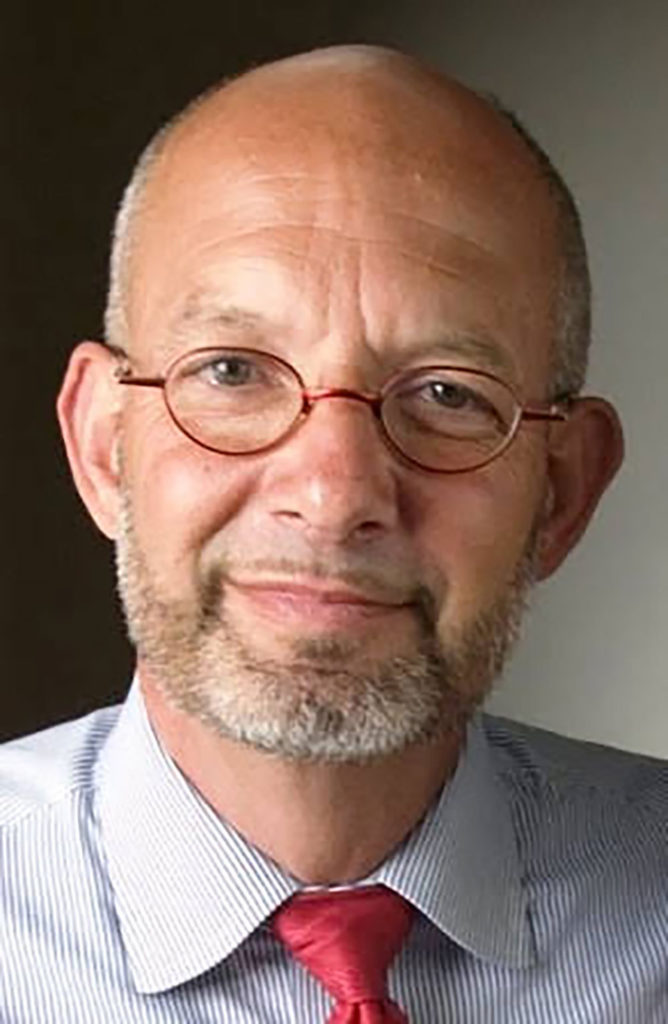
Speaking of the Downtown Entertainment District, the SC Warriors, with four new players all over 7 feet tall, continue to draw sell-out crowds. The tribute band “The Trav and the Swifties” will perform at the arena next week, featuring Ta Swift’s granddaughter, Trav, on vocals.
The redesigned Santa Cruz Wharf, which is now 300 feet shorter due to the back-to-back La Niña storms in 2065, is again open for business. The hourly submarine tours of the Monterey Bay canyon continue to depart from the wharf’s magnetic lift.
Over at the Santa Cruz Beach Boardwalk, the nearly 200-year-old facility continues to attract over a million visitors each year. The newest ride, Boardwalk Blast, launched last week. It projects riders 1,500 feet from the Boardwalk, across the main beach, and into the Monterey Bay National Marine Sanctuary’s portable warm water plunge (an 80-foot-circumference structure built with natural sea glass and kelp). Santa Cruz’s housing crisis continues due in part to Governor Jerry Brown VIII’s veto of a $1 trillion bond, proposed for the 2070 ballot. While rents for a single room are at historic highs, $22,500 per month, the governor says that continued private sector development will drive down prices by simply building more apartments and homes. Some remain skeptical.
Well, another year has come and gone, but we continue to have hope and aspirations for our wonderful town on the bay.
Fred Keeley, currently serving a term as Santa Cruz’s first elected mayor, has worked in county, state and local government since the 1980s.
An Inventor Speaks: Innovation and Technology Needed
By Philippe Kahn
Most predictions are entangled with politics. I’m an optimist—and I don’t do politics. I’m an inventor, a technologist and a scientist. I believe tomorrow can be better than today.
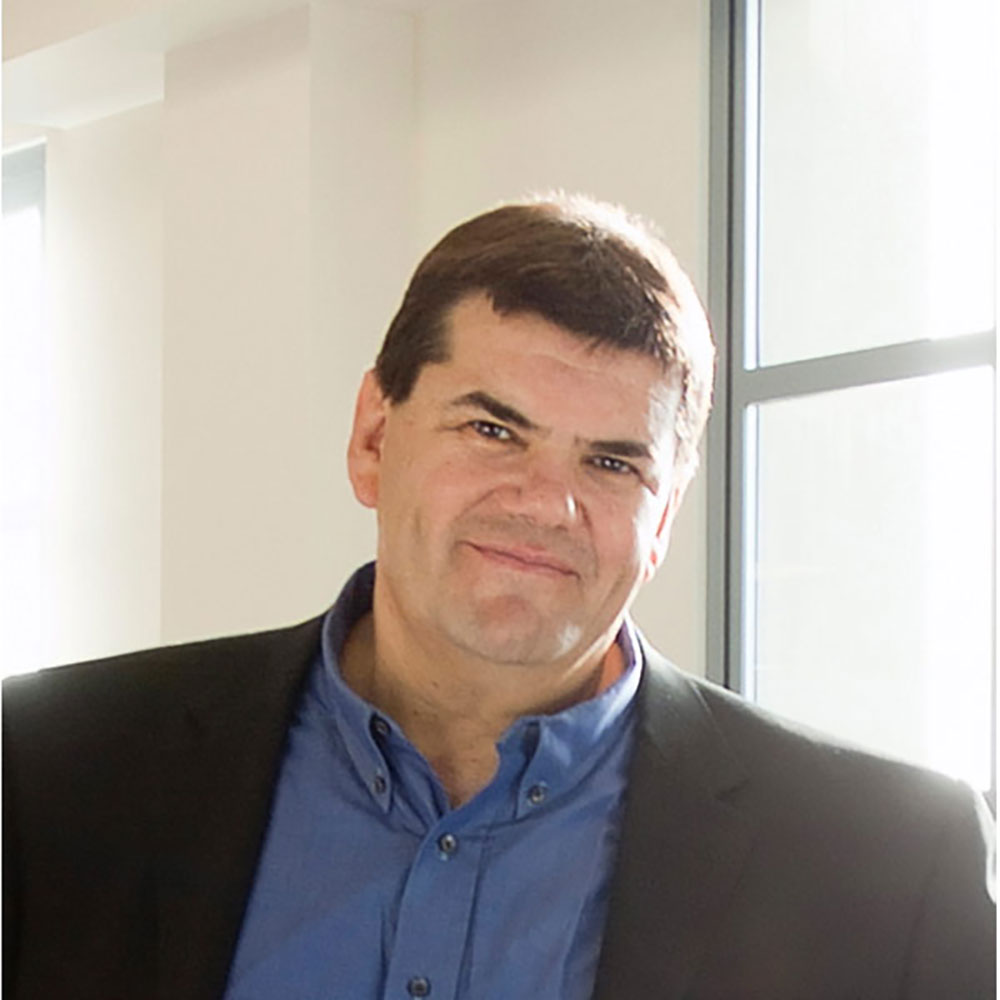
That said, we face undeniable challenges: rising oceans, a changing climate, population growth and more. I don’t believe politics can solve these issues, especially in such a polarized world. But I do believe that invention and technology can. By asking hard questions—and then questioning the answers—we can make real progress. Constructively. Rigorously. Within the framework of the scientific method.
My prediction is simple: through scientific progress and human ingenuity, we can meet most of the challenges ahead. That’s why I remain an optimist.
Philippe Kahn is currently CEO of Fullpower-AI. Among his 235-plus inventions, Kahn may be best known as the inventor of the camera phone, made right here at Sutter Health, while his wife was in a long labor giving birth to their daughter.
Santa Cruz Will Still Be Arty
By Nicole Fischer
Fifty years from now, Santa Cruz will still smell like salt air and coffee beans. The cliffs will still catch the morning light in that same golden way, and close by will be someone trying to capture it, paintbrush in hand. But the way we live, create and connect here will have evolved, rooted in the same creative pulse that has always defined this town.
In 2075, the world outside Santa Cruz might move faster than ever, filled with digital conveniences and instant gratification. Here, we’ll still slow down long enough to notice the color of the sunset. Our downtown will hum with life again, full of studios, pop-ups, galleries, and tiny shops built around people rather than products. Community markets will look a lot like they did decades ago, but with solar awnings, shared garden courtyards, and artists painting live while drones deliver coffee.
Art will not just hang on walls; it will live in the spaces between us. Homes will be smaller but filled with meaning. Pieces will be traded, borrowed, and passed down, creating a circular economy of creativity that values care over clutter. Handmade will never go out of style here. If anything, it will matter more than ever.

The beaches will be cleaner because the people will be more conscious. Locals will still surf at dawn, gather at sunset bonfires, and plant wildflowers along the bike paths. Kids will still sell seashell jewelry on the wharf, just like their grandparents once did, learning that creativity is currency.
And Rootstock? By then, it might be more than a store. It could be a collective of light-filled spaces across town. A place where art, conversation, and community blend together. A place where mentorship is second nature, where locals drop in to recharge, sip something good, and be reminded that beauty and belonging are still worth building.
Fifty years from now, Santa Cruz will still be a place that chooses soul over speed. A place that holds space for creativity to thrive. And even as the world changes, the heart of this coast will stay beautifully, unmistakably Santa Cruz.
Nicole Fischer is the founder of Rootstock Artisan Collective, a creative hub and storefront in Santa Cruz. She describes Rootstock as “a place that was born from a love of art, storytelling, and community connection. It’s a space where local artists can be seen, supported, and celebrated. Every piece carries a story, every purchase supports a dream, and every conversation is an act of connection.”
You Can’t Go Backward
By Joe Ferrara
I love Santa Cruz 2025. It is not the Santa Cruz I moved into when I started my business in 1976 at the young age of 27, but then again that was not the Santa Cruz of 1926. Those who have chosen to live here have always cherished Santa Cruz on an individual basis. When I hear the lament of longtime residents—“I want my old Santa Cruz back”—I quickly point out that change is inevitable. Horseless carriages to driverless cars, cash registers to POS scanners, dial-up phones to cell phones, newspapers to the internet—a plethora of technical advances to improve our way of life that some would say have drained Santa Cruz of its former unique charm. Some of that charm is gone, but much of it remains. People who care will continue to make it so.
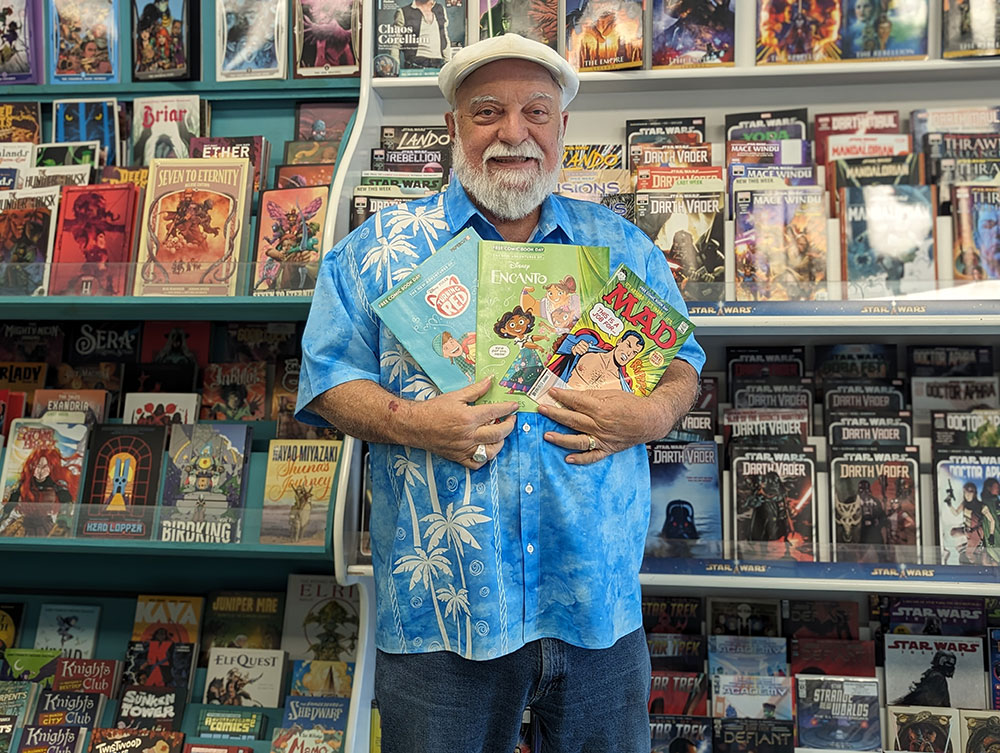
I believe we are always forging a new Santa Cruz. I also believe the new library will be the heart of a downtown neighborhood for many years to come, just as the old Cooper House was. It will be the blueprint for other communities. The old formula of a Central Downtown Business District will be replaced by neighborhoods with their own identities through unique shops and restaurants. Downtown, Midtown, East Side, West Side, Live Oak—all will incorporate the elements of community and appreciation of nature into their special charms.
I won’t be here in 50 years but I hope my business, Atlantis Fantasyworld, will continue to provide a fun and welcome environment to all our visitors. All I know is whatever I can think of today will be better in 50 years. The people who care will make sure of it.
In addition to being the owner of Atlantis Fantasyworld and a musician, Joe Ferrara is a former warehouse operative at San Jose Canning and a former vendor for the San Jose Bees minor league team. He studied music at San Jose State University.
A Place to Launch Tech
By Aviv Elor
Santa Cruz first pulled me in as a student, drawn by the redwoods and ocean. Then I tore my elbow during a judo match, and during recovery, I stumbled into virtual reality and assistive technologies research at UCSC. Suddenly, a decade had flown by: undergrad, PhD, launching Immergo Labs, all right here. This place shaped who I am. Looking ahead to the next 50 years, I’m both excited and nervous.
I feel we’re at a crossroads. Rents are through the roof. I’ve watched friends and colleagues leave because it’s too tough to stay. But there’s also this incredible foundation: UCSC pushing boundaries in research, a growing startup scene, and a community that genuinely cares about making things better for everyone.
Fifty years from now, I hope we’ve solved the housing puzzle, not by cramming in endless condos or renting garages to students (yes, I lived in a garage as a UCSC student), but by embracing real creativity in infrastructure. Imagine more ADUs offering affordable rents, expanded student housing that doesn’t mean cramming five people to a room, and a transportation network that connects new homes to the places people work and learn. Neighborhoods where you can truly walk or bike to work, and housing that’s thoughtfully woven into innovation districts. The beach town spirit that makes Santa Cruz home doesn’t have to fade. We need to be intentional about our growth.
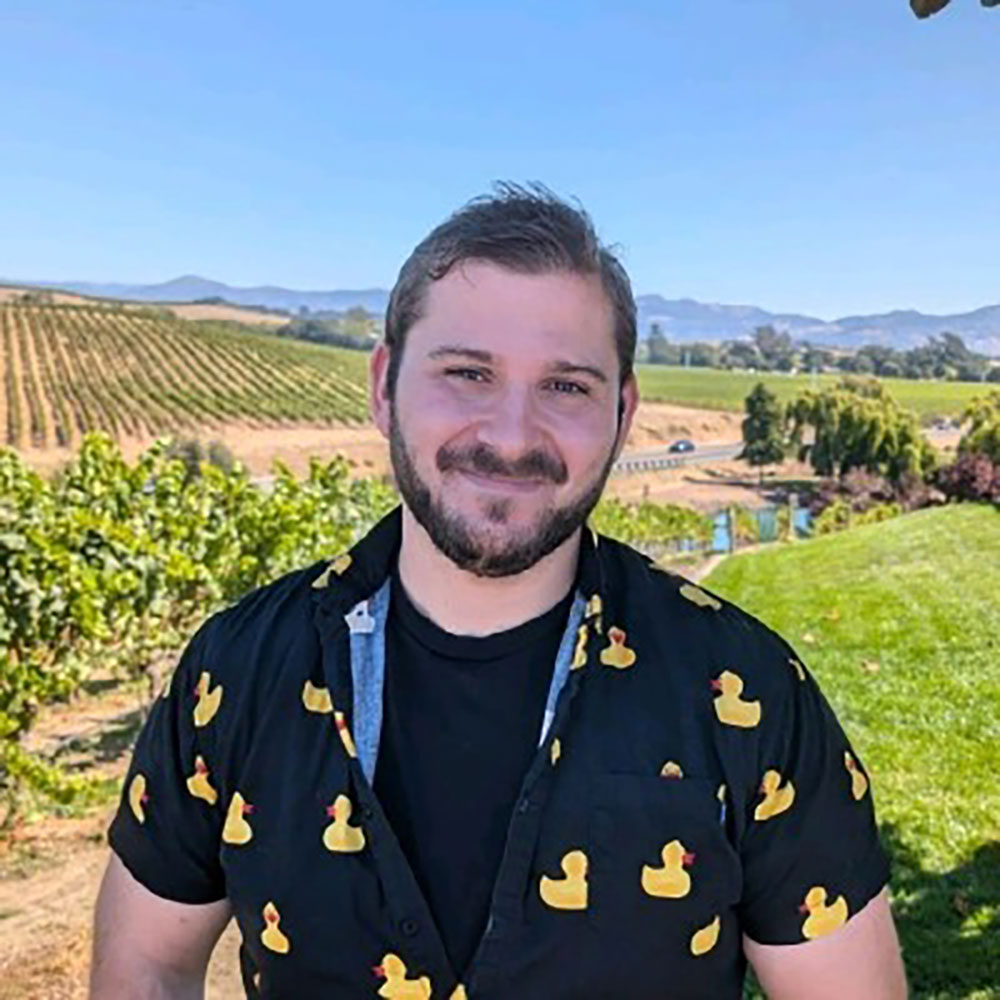
I also believe that UCSC is really just getting started. Beyond the new medical partnership with UC Davis (which is exciting), it’s about the whole research ecosystem. The university is already making waves in genomics, AI, assistive tech, climate science, ocean health and so much more. In 50 years, I envision UCSC as a global research powerhouse, where scientists tackle the world’s most pressing problems while remaining connected to the nature of Santa Cruz and their community. Labs working on climate-resilient crops, AI that helps people with and without disabilities, materials to replace plastics, and precision medicine for underserved populations. All happening here, where someone might build new things in the morning and hike through the redwoods in the afternoon.
The startup boom is already underway. We’re not trying to copy Silicon Valley. We’re building companies that reflect Santa Cruz values: sustainability, accessibility and social good. By 2075, I picture innovation hubs throughout the county. Robotics teams, biotech startups, clean energy ventures and health tech companies thriving. What really excites me is technology that doesn’t just stay in labs. It’ll be woven into daily life, empowering us.
Imagine walking through Natural Bridges with a lightweight pair of augmented reality glasses that show you tide pool species in real time, overlaying historical photos of the coastline and connecting you with marine biologists working nearby. Picture rehab patients doing physical therapy on trails, using wearable sensors that give instant biomechanical feedback, making recovery more effective while staying connected to nature. Students learning ecology through immersive experiences that help them fall in love with protecting this place. Technology that enhances our connection to Santa Cruz, not replaces it.
But as a coastal community, we can’t get there without tackling climate change. The CZU fires, the floods, the Wharf collapse … this is our reality now. We need serious investment in resilience: fire prevention, coastal adaptation, and protecting the redwoods and watersheds that define this region. In 50 years, Santa Cruz should be a model for how coastal communities survive and thrive despite climate chaos.
The biggest challenge? Keeping it equitable. As we grow, we can’t price out the teachers, farmworkers, healthcare providers, artists and longtime residents who make this place special. Every new development needs affordable housing. Every innovation should consider accessibility from the outset. Every policy needs to ask: who benefits, and who gets left behind?
I’m optimistic because I’ve seen what this community can do. I’ve watched UCSC students choose to stay and build companies here. I’ve seen locals rally around tough challenges. I’ve experienced the magic that happens when passionate people care more about impact than chasing IPOs.
In 2075, I hope my future grandkids can grow up in a Santa Cruz that’s thriving, not despite its values, but because of them. A place where groundbreaking research happens next to world-class hiking breaks. Where you can afford to raise a family and chase your weird, ambitious ideas. Where technology makes life better without making us forget why we’re here.
The next 50 years will show if we can make it happen.
As founder, president and chief research officer of Immergo Labs, Aviv Elor is empowering movement care providers and their clients through building one of the world’s first embodied XR telehealth platforms. Its technology enables full-body avatar interactions for 3D care sessions, integrating AI-driven biomechanics analysis and immersive exercise guidance.
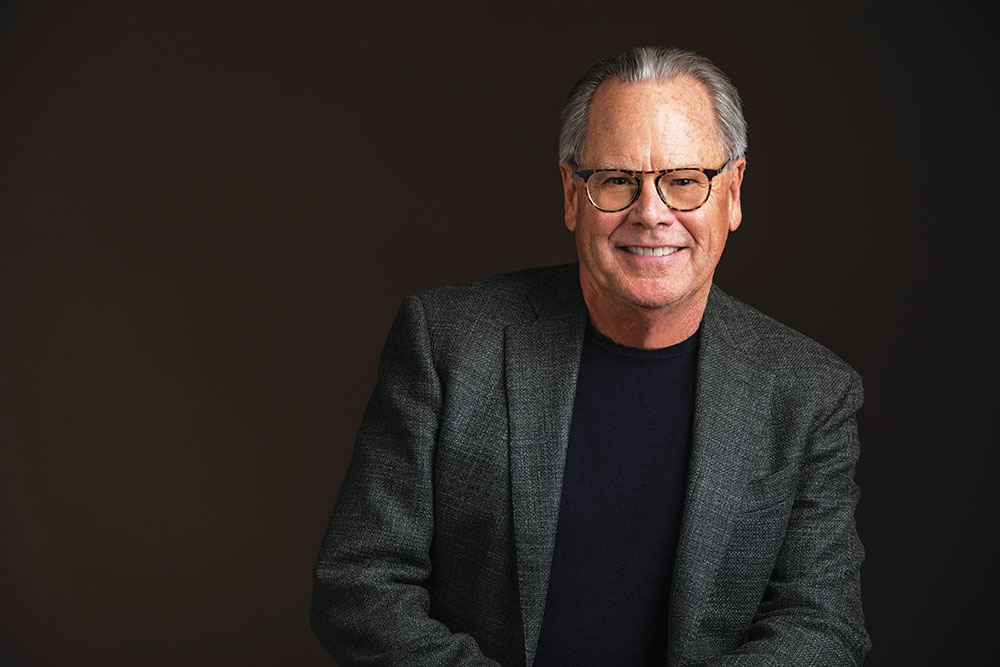
Preserve Our Culture
By Tim Jackson
I have no idea where SC County will be in 50 years. My hope is that it will be a community that supports the arts and culture and the artists who create it, as this is such an important part of a vibrant community. I hope the environment, particularly the ocean and redwood forests are treated with the great care and respect that they deserve. And, I hope this is a community that nurtures the younger generation by supporting and providing affordable housing and business entrepreneurship opportunities. To me, these are the key areas that will allow Santa Cruz to thrive.
Tim Jackson founded Kuumbwa Jazz Center in 1975, and it continues to serve the Santa Cruz County community. He also worked with the Monterey Jazz Festival starting in 1991, stepping down as artistic director in 2024.
A Centurian Looks Back
By Jaron Lanier
It is beyond me to articulate how grateful I am to be tasked with writing this 2075 memoir of life in Santa Cruz. That there are young people reviving the art of reading is the most unexpected bliss of my later years.
To those of you who read, ignore the sneers. You deserve to be snobs. You earn it. All those sneers are only in the service of the Big Compute. When you read, you are yourself, free and proud.
Indeed, you become a little like an individual version of our Santa Cruz. When I first arrived, a century ago, I was a vagrant hippie teenager. I lived in a barely congealed structure close to the beach with almost ten others of my kind stuffed into tiny, moldy rooms. Most of us surfed, played guitar, took psychedelics, rode motorcycles, and read long, long, strange paperback novels by writers with names like James Joyce, Thomas Pynchon, Kurt Vonnegut, Marcel Proust and Ursula K. Le Guin. Ocean air caused these books to fray into moist, log-like sculptures over time, the curled pages barely separable, and yet they were not abandoned. Teenagers routinely remembered dozens of each other’s phone numbers and could navigate the entire region from memory alone.
What the Santa Cruz of a century ago and today hold in common (you will note that to me, the old Santa Cruz still resides in present tense) is a sacred, joyous apartness. You could taste the sterility of Silicon Valley, right over the hill, even back before the Internet was initiated. Yes, I remember that. The feeling was already there, in anticipation.
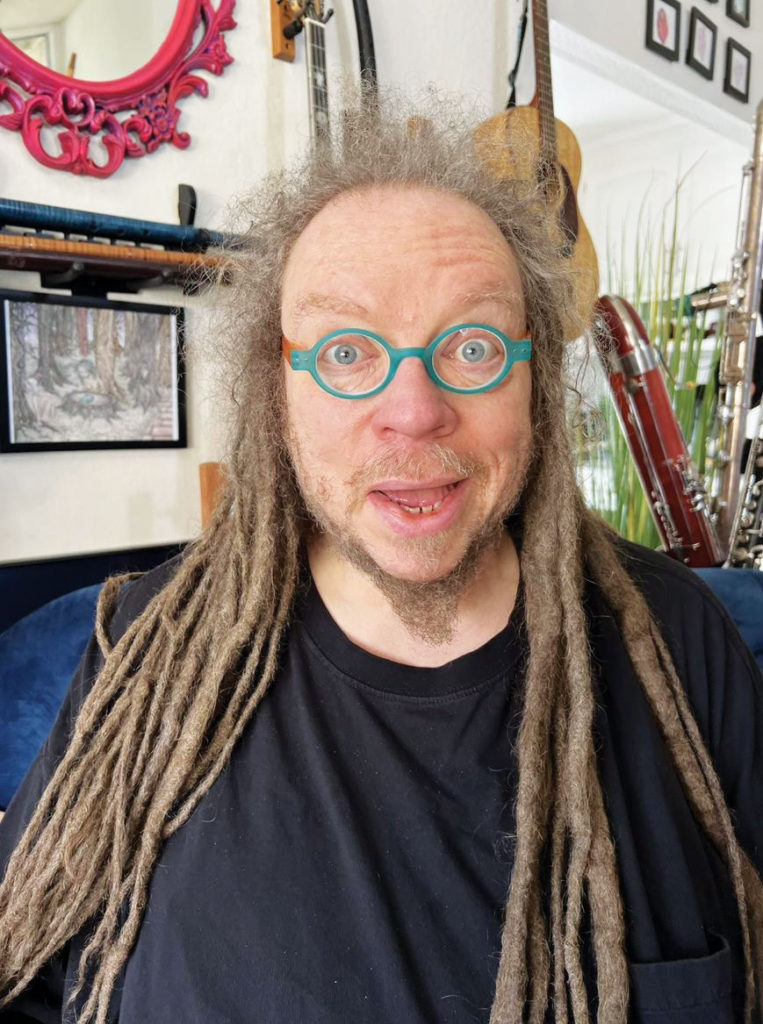
You would manually drive a terribly dangerous, gas-powered car back over the mountain to escape the great vacancy, and at the summit, a feeling would come to you. What was it? Negative ions from the ocean air? Or something beyond the reach of science? A sense of beauty and grace would diffuse into the brain. It was colored like rainbows and young love.
When I first arrived, I naively tried to find a place to live by entering a door marked by a sign that said “Real Estate.” The conversation I heard inside was about how the cost of living would soon go up, especially rents, and that would finally drive the hippies out of town. I wondered who would be better than the hippies. Didn’t those other people already have a place to live over the hill? I figured out, just in time, that in Santa Cruz you find things through faith in magical social connections, not through offices with signs out front.
Since then, Santa Cruz has struggled with the contradiction in our core. Our values are liberal, so we want to be fair, inclusive and open. And yet we don’t want to be drowned by the pervasive mediocrity and digital obedience that has consumed almost everywhere else. So we must awkwardly oscillate. We isolate ourselves in order to remain inviting. We are ridiculous, but it is the only way. You will note this is like what you, the reader, must do to survive in this world of digital debraining.
Oh, I remember when earthquakes came under control, how we demanded, and achieved, a rise in the mountains, so that Highway 17 became even more treacherous. The ground rumbled a little every evening for almost two years. Many asked why. By then cars could fly, so who cared? We cared. We needed to send a signal.
When we gained our own colony on Titan, what did we do? Liquid methane surfing. Why? Why exist? We assert our love and joy out of pure, ludicrous absurdity, bringing a mystical spark into the void.
When you read you are not isolating. You are projecting yourself into existence.
Santa Cruz was and remains a miracle. A rainbow that makes its own light.
Jaron Lanier is a musician, author and futurist. Read about his work, including Ten Reasons for Deleting Your Social Media Accounts Right Now, at JaronLanier.com.
Santa Cruz: Future San Diego?
By Samuel LoForti
The majesty of the redwoods will fade, much like the surf breaks I’ll tell my grandkids about, those that no longer exist. Mountain towns and neighborhoods will give way to the ultra-wealthy, as the government struggles to maintain roads and insurance companies refuse to back mortgages. Our coastal towns will be amalgamated into something resembling San Diego, with higher-density developments spreading across the lower terraces.
As technology continues to isolate people, our community could become a refuge for those seeking connection and creativity. As the mountains depopulate, State Parks and Land Trusts will likely expand, preserving land for nature. Oak trees will spread, and pine forests will continue to grow, as the redwoods retreat north.
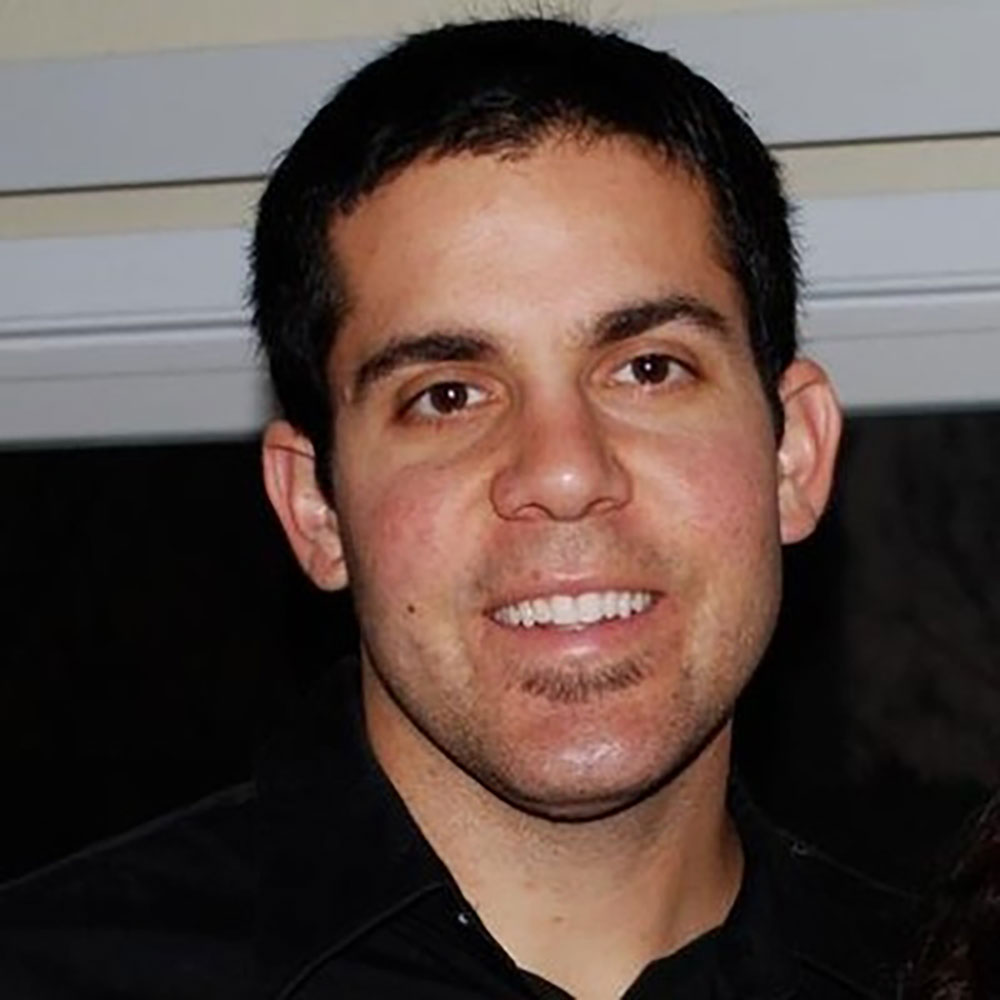
We may live closer together, but our community will remain tied to the beauty of nature, giving local artists space to thrive. While the financial outlook is uncertain, UCSC will continue to drive innovation—especially in creative fields and biotech, which could occupy parts of the West Side’s industrial zones. Skilled trades that blend craftsmanship and technology may become the backbone of our local economy.
Tourism will likely evolve from a seasonal industry into a year-round presence as climate change makes our region feel more like today’s coastal Southern California. We’ll remain a playground for Silicon Valley, but the progressive politics of today may shift toward a more libertarian mindset—one that values personal freedom in response to an increasingly technology-driven nanny state.
Our future may be uncertain, but our pursuit of happiness will endure. As the founders wrote in the Declaration of Independence, our willingness to navigate the limits placed on those freedoms will define this era of change.
Samuel LoForti is the cannabis licensing officer for Santa Cruz County. Since 2018 he has developed a compliance and licensing program for the county’s evolving cannabis industry.
The View from Here and There
By Roz Spafford
As I prepare to move back to Santa Cruz after a number of years in Canada, I’ve thought often about what Santa Cruz is and could become.
What accounts for the gravitational pull that would persuade a person (AKA me) to leave the haven of healthcare and of polite rationality? Partly it’s that Santa Cruz is closer to more of the people I love. It’s also because “Santa Cruz is in the Heart,” as Geoffrey Dunn puts it in the title of his book of essays about Santa Cruz; like a beloved person, Santa Cruz in all its incarnations burrows deep into memory. What is it we love when we have loved Santa Cruz—for 50 years and then some?
Your list is likely similar to mine: The fluid intersection of rock, ocean and sky. Its eclectic population, free to devise new versions of them/ourselves. Its determined and eloquent politics. Recently I’ve been reflecting on the forces that inspire Santa Cruzans to create innovative institutions—schools, businesses, service and arts organizations.
To name just a few: Kuumbwa, also turning 50. Bookshop Santa Cruz, nearly 60. The Santa Cruz Chorale. The Santa Cruz Community Credit union, turning 48 this year. Barrios Unidos—in its 50s. The Resource Center for Nonviolence—almost 50. Save Our Shores. In Celebration of the Muse. UCSC. Other important bodies live on in their legacy, in the community their work produced: Westside Neighbors. The Basic Exchange. The Santa Cruz Community Housing Corporation. Cafe Pergolesi and the Saint Cecilia Society for the Preservation and Restoration of Gregorian Chant. India Joze (though we are lucky to still have Joe himself). The Nickelodeon. KUSP. The Independent, Matrix, Phoenix, Express and Sun newspapers. These and many other groups were part of the fluid ecology of Santa Cruz that continually reinvented the place and people.
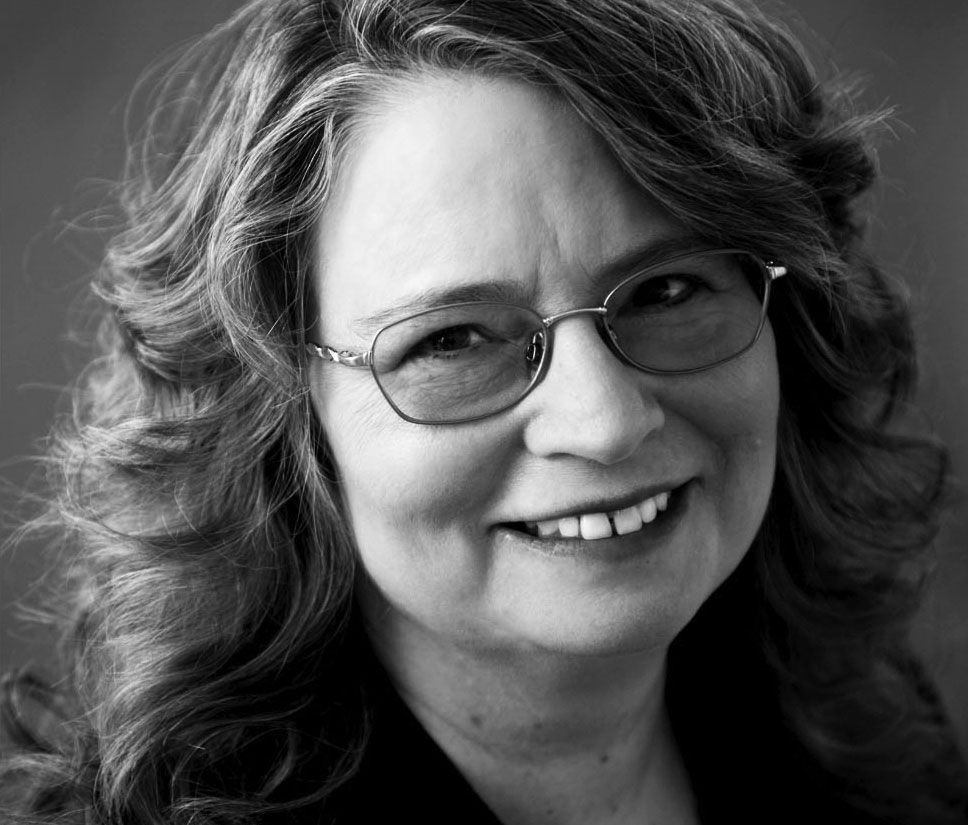
What we have been has come at a cost, however. Santa Cruz has had to learn and re-learn that leaving others out, defining them as “others,” damages them as well as the heart of the community itself. The future Santa Cruz will flourish only if we remember to practice radical inclusion, always asking ourselves whose voices are missing.
And every community institution—and person—is dependent on a myriad of people whose work is less visible: Food service workers, health care workers, mechanics, office workers, teachers, farmworkers, legal aid staff, many of whom find it increasingly difficult to survive here. I don’t mean to make a false distinction: Many of those who built these organizations worked simultaneously in these fields, at a time when the abyss between wages and rents was shallower. Now, though, housing is increasingly unaffordable by people with ordinary working- or middle-class jobs, despite the valiant efforts to build housing which is. Would the arts activists, food visionaries, environmentalists, fierce journalists, book people, and community organizers who created the Santa Cruz we now love be able to do so now—much less in 50 years?
I hope that as we work to invent the Santa Cruz of the future, we will think about what allows a community to give birth to itself, again and again, and about how inventing a world we can live in and love depends not only on creative vision and commitment but on consciously created economic and social conditions—on jobs with living wages; days free of the terror of deportation; legal protections for families of all kinds and statuses; grants without strangulating strings attached; accessible health care; rents that people can manage on one shift a day (so they can raise kids and/or projects in their second shift). In 1975, when Good Times launched, at least the economic basics were available to many more people, people who in return could build the community that supported them. When we think about Santa Cruz in 2075, we need to start with these fundamentals, these commitments. I’ve learned that these are Canadian values; I think they are Santa Cruz values as well.
Roz Spafford has been a writer, teacher and activist for a number of years, mostly near the central coast of California. She taught in the Writing Program at the University of California, Santa Cruz, where she also served as chair of Writing and provost of College Eight. One of her stories from the southwest, “Drought,” won the 2010 David Nathan Meyerson Award from Southwest Review and was anthologized in Road to Nowhere and Other New Stories from the Southwest. Another, “The Season,” won the 2014 Obsidian Prize from the High Desert Journal. Her first book of poems, Requiem, received the 2008 Gell Poetry Prize from Writers & Books in Rochester, New York.
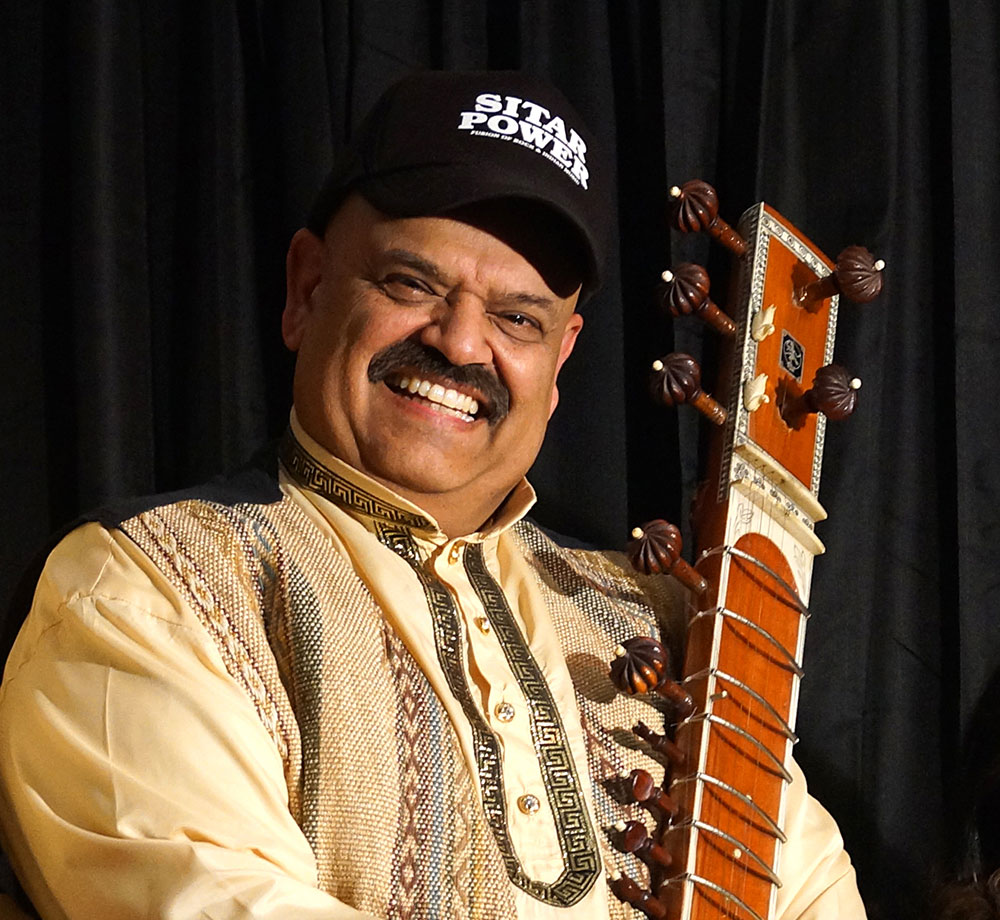
The Rhythm of Change
By Ashwin Batish
The recent surge in downtown construction, I believe, marks the beginning of a trend toward increased population density. Future developments will likely include larger housing projects, such as the proposed transformation of the Capitola Mall into residential units. However, I foresee a potential stalemate that may compel the county to impose limits on population growth, as the existing road infrastructure and schools may struggle to accommodate unchecked expansion. Enhancements in public transportation, particularly through rail-based systems, are anticipated, alongside the growing interest in flying cars. In 50 years, it may be commonplace to summon a flying robotic vehicle to transport you to a specific location, while self-driving cars could become a standard feature in everyday vehicles.
During my recent trip to Santa Monica, I observed a significant presence of rental units compared to owner-occupied homes, a trend that I can also envision occurring here. I am confident that Santa Cruz will maintain its distinctive beach atmosphere and continue to motivate new generations to explore innovative ways to thrive in an increasingly challenging economic landscape.
My family has deep roots in Santa Cruz, where my children were born and have developed a strong affection for the area. I take pride in witnessing them embrace and carry on our family’s musical legacy. Looking ahead to the next 50 years, I envision the establishment of a prominent music institute that attracts students from around the globe, eager to learn the intricacies of Indian music.
Ashwin Batish is a sitarist and tabla player and the proprietor of Batish.com.
Live Long and Prosper
By Corrina McFarlane
It’s 2075. I am 119 years old. Since I set my lifespan sights on 140ish way back (at my young granddaughter’s puzzlement that I might leave “early”), I’m definitely stoked about my birthday count to date. A worthy mile-marker in the mystery adventure of vibrant longevity.
Now that we are great-great-grandparents, we are living repositories of how this Santa Cruz World unfurled over a century, including how, back in the 1990s, we almost bailed out of the region entirely due to the crazy economics of the housing market. It seemed back then that we could never afford a house in this town as prices kept going up and up and up. And then, the unimagined grace of an inheritance split between 11 cousins, enough for a down payment on a Santa Cruz corner house. Nothing like 30 years as temporary renters to give you an appreciation of your own home. In this home now, two more generations of children have come of age.
One of the funnest “that’ll never happen” but it did is our how-did-we-ever-live-without-it Personal Rapid Transit—PRT—system. Now Santa Cruz is famous not only for such innovation as its Restorative Justice Neighborhood Accountability Board but also as a podcars transit town. Remember when there used to be only the “just for fun” Boardwalk cable cars that went back and forth high up along the seafront?
It’s crazy we didn’t realize sooner that this was the way of the future for transit. Now PRT goes to South and North County and up to UCSC. Kids of today can’t really wrap their heads around how we did anything before the SCCPRT system was part of everything.
Oh, and the days when car drivers regularly, inadvertently killed, mangled and maimed bicyclists—so-called “KSI”—those days are long gone, relegated to the Dark Ages of yesteryear. In the end it took us to spring ourselves from a car-centric mindset, and voilà! Radical new outcomes. If anything was a paradigm shift, that surely was.
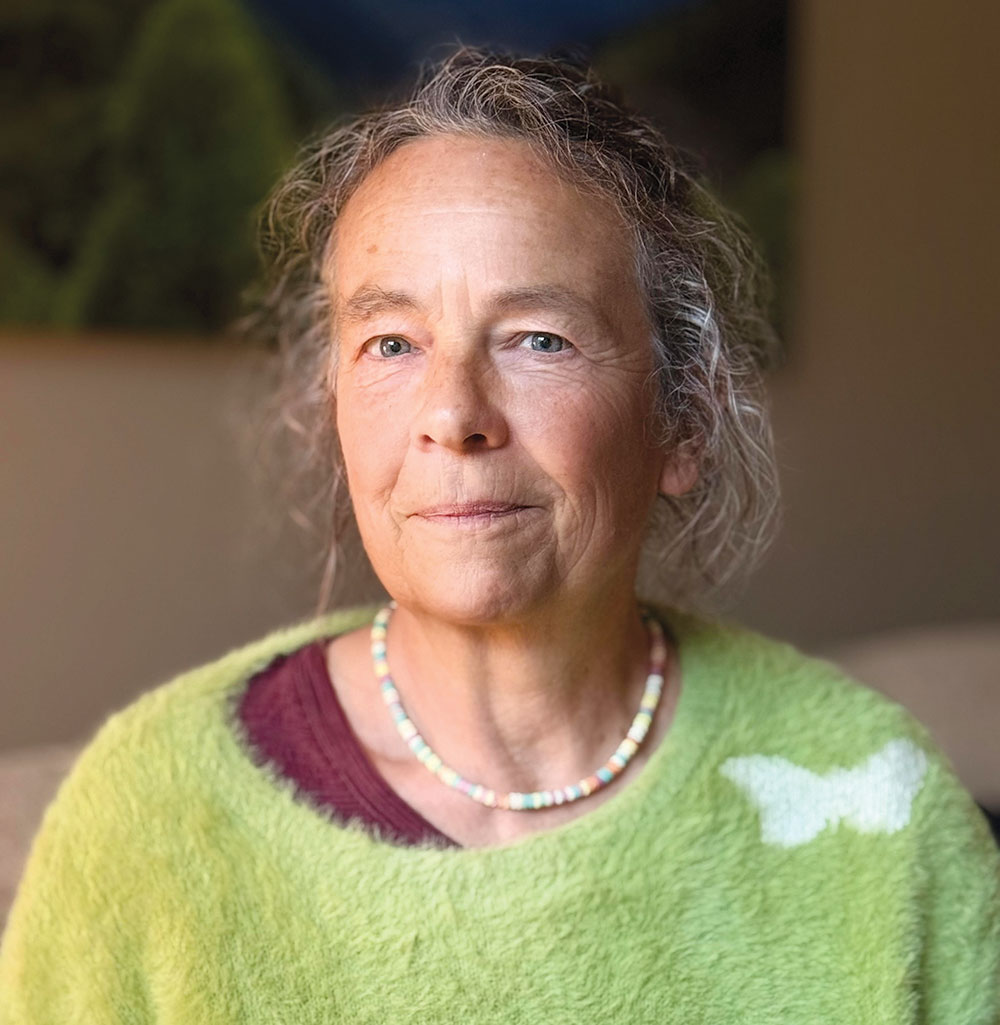
Maybe you didn’t need me to tell you this, but sea level rise is indeed par for the course these days, just as Russell Brutsché’s early 21st-century paintings depicted. The Sea Level Rise Vulnerability Assessment—the one that projected a “managed retreat” would be necessary “in the long-term”? That’s the reality we live with every day now from season to season.
It’s true, just as the London Council concluded back in the late 20th century, human beings don’t take these projections seriously until they get flooded out at least three times, and/or catastrophically. Okay, okay, we got the message; we’re backing off now.
The ocean gaining ground is the undeniable stark reality we live with. Even so, since we call this place home, between mountain and shore, with a fondness we cannot dismiss or deny, we are willing to be extraordinarily adaptive. Eco-villages on higher ground are now quintessential Santa Cruz, especially the house and village design based on Southern Italy’s Puglia region: trullo (plural: trulli) architecture; delightful beehive-like homes in clusters, structures that double as a highly effective water catchment device.
And I thought it could have happened one hundred years ago, but, hurray: Pavement is finally made of permeable surfaces, allowing winter rains to soak into the land. Coulda, shoulda, woulda … but better late than never.
Our persistent saltwater intrusion issue around Soquel was ultimately, spectacularly addressed with a state-of-the-art “Upcycle” industrial symbiosis center: Cold, brackish water effectively cools our county computer data center, after which the seawater is purified for land use. A win-win-win.
Our bioregion is a sparkling jewel of regenerative agriculture, fully incorporating the principles set forth by Helen Mayer Harrison and Newton Harrison and their Center for the Study of Force Majeure, a model of reciprocal deep ecology with solutions informed by the dictum “systemic problems require systemic solutions.” That is to say, development in our day and age has come to mean effectively integrated intelligent design. Everything I am describing is “triple bottom line” economics in real time: interdependence; people, planet, profit; everybody matters, everybody counts.
Living systems thriving is key. This is the dynamic protopia we aspired to from when our own children were small. And here we are, multi-generational, proactively inviting and actualizing “the more beautiful world our hearts know is possible.”
Corrina McFarlane is the president of Santa Cruz Passages, creating bespoke weddings since 1991 (your word is your wand).
Future for Our Kids
By Ryan Coonerty
Making predictions of life 50 years from now feels impossible. I can’t even predict what the headlines will be tomorrow morning. In 2025, every hour we are being forced to confront the impacts of some technological innovation, destruction of legal and moral norms, and global economic convulsions that overwhelm families and small businesses. AI, climate change, demographic shifts and authoritarianism alone could render an unrecognizable future.
Yet, while human nature is wired to focus on change and risk, I think maybe the wise thing to do is focus on what is likely to stay the same.
I am 51 years old, born and raised in Santa Cruz, so my frame of reference is the Santa Cruz of my childhood and how much things have changed in the last five decades. In the 1970s and ’80s, Santa Cruz was a coastal town (with no midtown!). There was significant tourism and a growing university. That dynamic created vibrancy, frustration and worry. People complained about social issues downtown, crime, technology hijacking childhoods, and a national government that often didn’t reflect our values. The Cold War posed an existential threat to life on Earth.
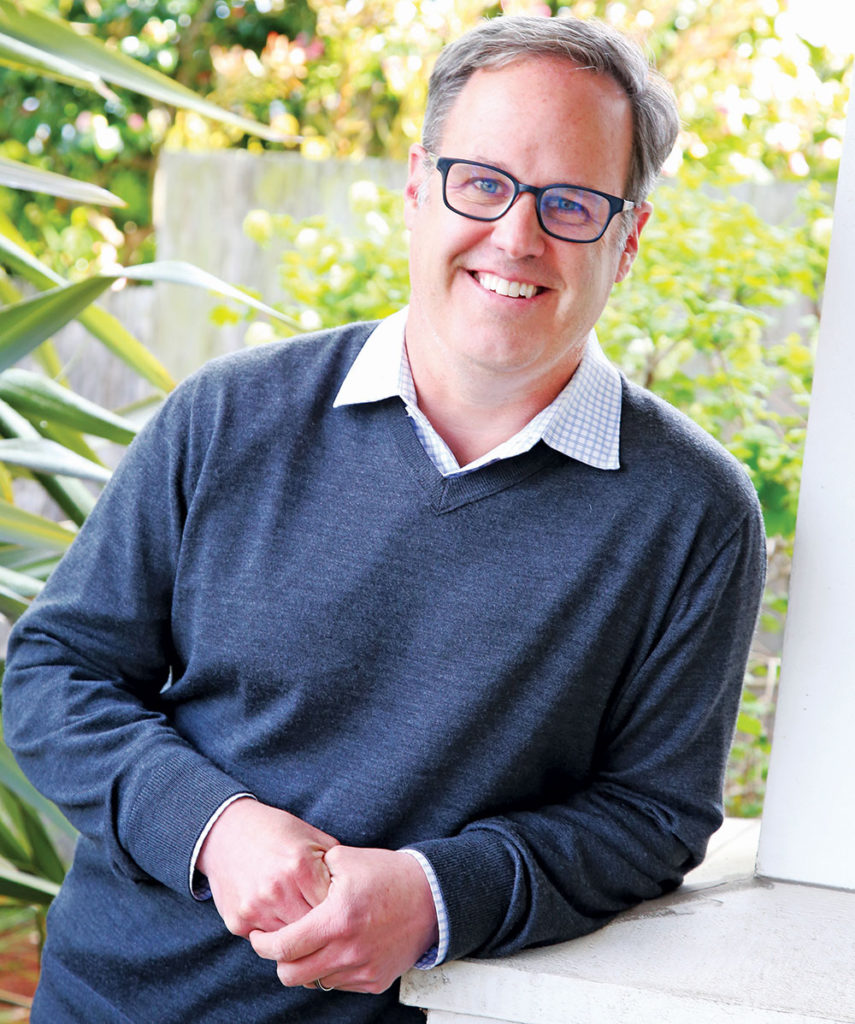
Still, people walked on West Cliff, surfed, fell in and out of love, went to Little League games and high school theater. Santa Cruz lacked large companies, so many people found creative ways to live here. They started businesses, nonprofits, and weekly newspapers like this one. There were racial divides and different socio-economic realities depending on where you lived—even if it was only a few miles apart. Yet, despite those divides, when natural disasters struck, we pulled together and helped each other. The bonds that formed in times of crisis often carried forward.
Now, despite the fact that I can swipe my phone and get a pizza delivered as opposed to calling in an order, I’m not sure that much has changed. This is partly because for all technological advancement, people and communities evolve slowly. It is also because our community consistently made decisions to invest in each other and the future we wanted. We built libraries, health centers and small businesses. We protected open space. We invested in schools, programs for kids, seniors and the arts. Our county is isolated—we are not connected to the state water system and have few roads in and out—so we are interdependent and, in many ways, self-sufficient.
My kids will be in their 60s a half-century from now. I don’t expect I will be here. They may be able to pull up a hologram of me for my grandkids. My hologram will tell them about the old days when you had to call someone to order a pizza instead of having Joby deliver it after you tap your finger three times. My grandkids will be bored by my story. Their implanted AI chips will sense their lack of interest and delete me. Then I hope they go for a walk on West Cliff, say hi to a neighbor, and complain about tourist traffic and the national government, before going to a City Council meeting to fight for a better future.
Ryan Coonerty, former Santa Cruz mayor and Santa Cruz County supervisor, now works for San Jose Mayor Matt Mahan as senior intergovernmental affairs advisor.
Santa Cruz County 2075: A Vision in Collaboration
By Robert Mazurek
After over two decades leading coastal conservation efforts, I’ve learned that though predicting the future is impossible, preparing for the future with honest reflection, a clear vision, and a bit of optimism is critical to our well-being. I have no doubt that Santa Cruz County in 50 years will be determined primarily by decisions we make today about climate adaptation, community resilience, and how we respond to accelerating climate impacts.
Our next 50 years will be defined by ecological realities we can no longer ignore: rising seas claiming beaches and neighborhoods, drought and deluge cycles stressing water supplies, wildfires threatening communities built into forests, and marine ecosystems shifting in ways that ripple through our economy and culture. The question isn’t whether these changes will reshape Santa Cruz—they will. The question is whether we’ll adapt intentionally or reactively.
But these past 50 years have revealed something extraordinary: our region’s remarkable capacity for science-based collaboration. The Monterey Bay National Marine Sanctuary, established in 1992, created a framework for multi-jurisdictional cooperation that now extends across watersheds, coastlines and communities. And through the California Marine Sanctuary Foundation’s Climate Resilient Monterey Bay initiative—a $71 million collaboration among 29 partners—we’re demonstrating that complex challenges can be solved through integrated solutions no single organization can deliver alone.
Now onto my crystal ball…
Five Years: Building the Foundation (2030)
In five years, Santa Cruz County will have completed critical flood risk reduction projects along the San Lorenzo River, Pajaro River, and lower Watsonville Slough. The living shoreline at Main Beach will help protect downtown Santa Cruz while restoring habitat. Importantly, the Monterey Bay Climate Adaptation Action Network will act as a permanent regional collaborative hub bringing together governments, tribes, NGOs and communities working toward climate resilience well into the future.
Our workforce development programs will have trained over 1,000 young people in climate adaptation skills—from ecological restoration to prescribed fire management to coastal engineering. These aren’t just jobs; they’re pathways to economic opportunity that directly strengthen our community.
Ten Years: Systems Taking Root (2035)
By 2035, we’ll see the compounding benefits of early investments. Restored floodplains along the Salinas and Pajaro rivers will have reduced flood risk while recharging aquifers and creating wildlife corridors. Fire risk reduction treatments will have demonstrably reduced wildfire danger to communities from Carmel to Santa Cruz.
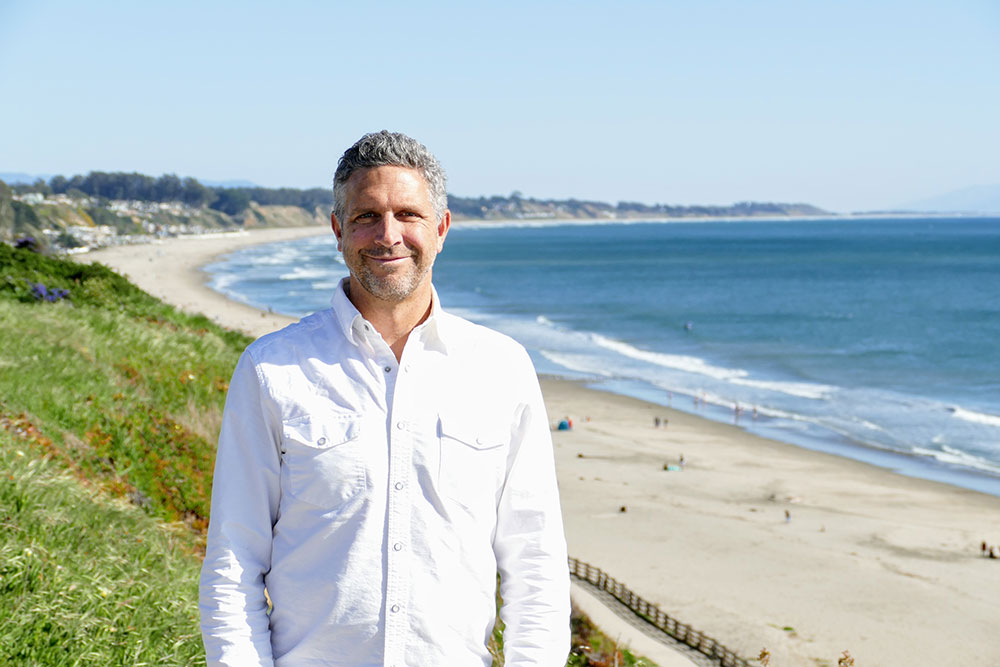
Fifty Years: An Integrated Vision (2075)
Santa Cruz County in 2075 could be a global model for climate-adapted coastal communities. Here’s what that looks like:
Resilient Coastlines: Rather than fighting the ocean with seawalls, we’ll have embraced dynamic shorelines that migrate inland through restored marshes, dunes and floodplains. Portions of West Cliff Drive may need to adapt to changing shorelines, but in its place will be functional ecosystems that protect our community while supporting fisheries, tourism, recreation, and importantly natural infrastructure.
Living Rivers: The San Lorenzo, Pajaro and Salinas rivers will function as connected ecological systems rather than engineered channels. Seasonal flooding will be accommodated through strategic floodplain restoration rather than prevented through failing levees. Agricultural lands that flood frequently will have transitioned to wetlands and wildlife habitat, while remaining farms will use regenerative practices that build soil health and water retention.
Fire-Adapted Landscapes: Indigenous cultural burning practices, reintegrated through decades of collaboration with tribal communities, will have reduced catastrophic wildfire risk while restoring ecosystem health. Our forests will be actively managed through prescribed fire, grazing and selective thinning—not left to catastrophically burn. Communities will be designed with fire resilience built in, not added as an afterthought.
Diverse, Climate-Ready Economy: Rather than relying on tourism and tech, our economy will be anchored by climate adaptation industries—ecological restoration, renewable energy, sustainable agriculture, marine technology. The thousands of young people trained in our workforce programs over decades will have created businesses, nonprofits and innovations we can’t yet imagine.
The Work That Gets Us There
What most needs improvement in Santa Cruz County today? Our capacity to act at the pace and scale that climate change demands. We have excellent science, dedicated people and innovative projects—but we lack sufficient funding, coordinated governance and the political will to make difficult land-use decisions.
Who’s working most effectively for change? It’s not any single organization but the collaborative networks forming across jurisdictional and sectoral boundaries. Through Climate Resilient Monterey Bay, we’re proving that municipalities, tribes, universities, NGOs and community organizations can pool expertise to achieve more together than separately.
The past 50 years taught us that protecting pieces of the landscape—a beach here, a watershed there—isn’t sufficient. The next 50 years require integrated approaches: from watersheds to whales, from inland forests to offshore waters, from individual projects to systemic change.
An Honest Vision
I won’t pretend the next 50 years will be easy. We’ll lose beaches, neighborhoods will flood, fires will burn. Some changes are already locked in by emissions already in the atmosphere. But we have a choice about how we respond.
Santa Cruz County can become a place where adaptation isn’t reactive and haphazard but proactive and intentional. Where natural systems are restored not despite development but as essential infrastructure. Where diverse communities work together not because it’s easy but because it’s necessary. Where young people see a future worth staying for, building careers in climate resilience and ecological restoration.
This vision isn’t inevitable—it’s a choice. And we’re making that choice, project by project, partnership by partnership, community by community. After two decades doing this work, I’m not optimistic because I’m naive about the challenges. I’m optimistic because I see what’s possible when we work together, grounded in science, guided by communities, and committed to the long-term health of this extraordinary place we call home.
Robert Mazurek, executive director of the California Marine Sanctuary Foundation, has dedicated over two decades to strengthening ocean governance and creating resilient marine ecosystems worldwide. Though he grew up far from the ocean in Illinois, a fascination with whales and dolphins sparked a passion that would take him from California’s coast to international waters and back again.







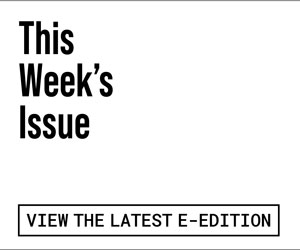






Wow! Great article here, with inciteful visions of our future. Thank you for this varied and forward looking picture of our community.
I wondered why these pieces read like fever dreams—then I calculated that LOL the average age of your futurists is 62. One more datapoint that your rag is rapidly morphing into the weekly newsletter of Senility Shores Senior Living.
P.S. And but all of your seers should be disqualified from the future beat, since not a one mentioned the electric robotaxis already running in other cities and poised to deliver the biggest jolt to how we live and move over the next five years—not fifty. Hard to see the future right in front of you when you’re permanently buzzed on your own high-grade nostalgia.